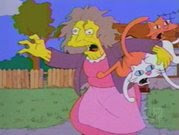In the last section of my book Friedman continues to support his three main ideas of hot, flat, and crowded. Specifically he shows how Texas Instruments was able to cut cost by millions,
Together, TI engineers and the RMI team designed big water pipes and air conditioning duct with fewer elbows, which reduced friction loss and let them use smaller, energy-saving pumps. To bring down cooling costs in sun-baked Texas, engineers designed a plastic membrane that reflects 85 percent of the sun’s radiation from the roof (Friedman 282).
Furthermore they were able to use seven chillers instead of eight, which saves them $1 million and a lot of space. The man overseeing it all, Paul Westbrook, argues that it isn’t always about windmills and solar panels, but rather finding creative ways to reduce waste and energy (282). Something that I enjoy about this book is that it has real world examples. I totally agree with Mr. Westbrook because every company has different needs. Would it make sense for the Starbucks down the street to get a huge windmill out front? No, but there are many things they can do to creatively cut energy costs, but not customers. Later Friedman comments on the failures of the last administration,
It is a cruel joke the way Congress and the Bush administration count pennies… as if the money for wind, solar, and biomass were coming out of their own children’s piggy banks, and yet they throw money out the window…when it comes to old, established, well-capitalized oil, coal, and gas industries… (379).
It seems like a recurring trend in this book, that the mistakes we made in the past have come back to haunt us in the future. I’m sure it isn’t all the Republicans fault either, just mostly their fault. Regardless of your position on global warming or the environment in general, we need to find alternative energies. Oil gives dictators power and it isn’t going to last forever. We can’t procrastinate and wait for someone to come along solve the energy crisis because that may never happen. His central theme of hot, flat, and crowded just further supports the need for alternative energy. If the world’s developing countries all suddenly develop, our resources will be used that much faster. In the end, I would definitely recommend this book because it is full of great examples and anecdotes. He really gets a lot of proof together to support his ideas.
Subscribe to:
Post Comments (Atom)

3 comments:
I think your point that different situations require different energy-saving solutions is good. It is probably easy for companies to fall back on the same solutions (windmills and solar panels), and to use the fact that these solutions don't work for them as an excuse to not save energy.
The other thing I thought was interesting about the book was that Friedman seemed to emphasize the fact that people shouldn't wait around for a solution to the energy crisis, and should take action themselves. This makes Friedman somewhat of a hypocrite, since he is basically just talking about the problems our planet has. Publishing a book doesn't actually fix global warming or the energy crisis.
Like Katherine said, publishing a book doesnt really accomplish much in my opinion. It seems to me that everyone who would read a book about global warming already supports the idea that global warming exists, and so all that Friedman is really doing is telling the world that he beleives in global warming. I do support his enegry saving ideas, but it seems like he should stop writing about it and do something.
I think that writing a book does serve its purpose. Think about how much popularity the book has gained. I do agree that in Friedman's books, or in someway, he should try and share what he thinks should be done about global warming, and then he should go do it.
Post a Comment